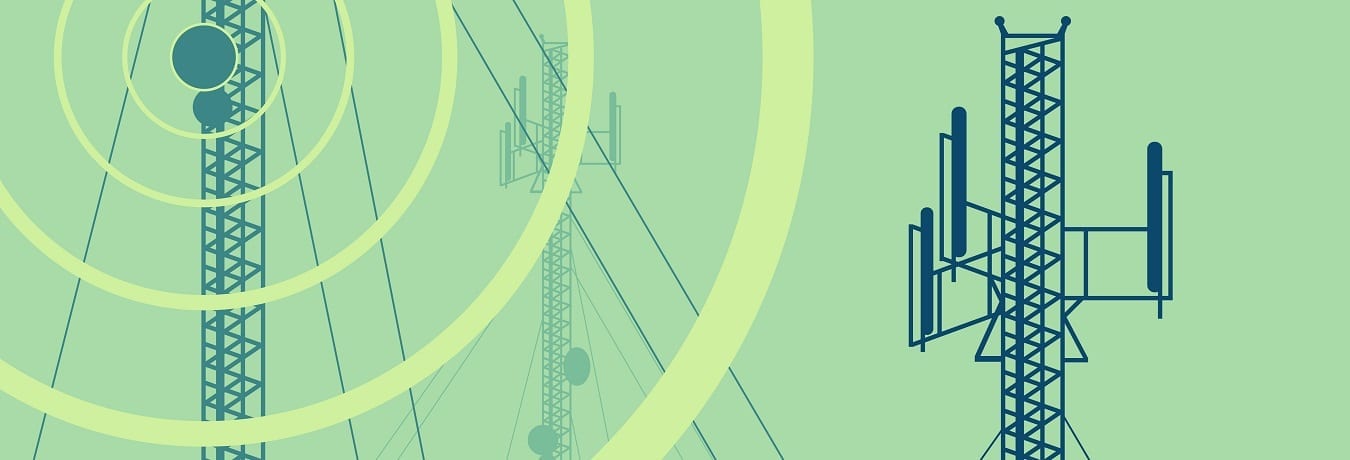
Fifth generation wireless networks, otherwise known as 5G networks, are the latest iteration of wireless cellular technology aiming to bring greater speeds, reliability, security, and connectivity to wireless networks. 5G technologies are some of the most exciting currently being developed, largely due to their potential to further drive and advance what is being dubbed as the Fourth Industrial Revolution. In this three-part series of articles focusing on 5G, we’ll be looking at how 5G will improve wireless networks, how it could very well become essential for both public and emergency services and its role in potentially bringing about a second IoT explosion.
5G technologies are the fifth generation of mobile wireless standards based upon the IEEE 802.11ac standard of broadband technology and, like its predecessors, will look to enhance and improve upon existing wireless networks in areas such as connectivity, reliability, security, and energy efficiency as well as several other areas.
At present, 5G technologies are still being developed and different architectures built and tested in order to determine how best to implement and integrate the wireless networks of tomorrow, however, many countries are claiming they’ll likely be ready to roll out 5G technologies as soon as 2020.
With our use of and reliance upon connected smart and Internet of Things (IoT) devices growing year by year, the way in which they connect us and to each other will become increasingly important in light of both the services providers will want to introduce and the security of the millions, possibly billions of connections that will be hosted. In this article, we’ll be detailing several ways in which 5G technologies will improve upon previous iterations, starting with speed.
Speeding Things Up
One of the most discussed aspects of any new network technology is how much faster it will be than its predecessor. 4G and LTE speeds were excitedly discussed before they were rolled out and, like they before it, 5G has proved no exception to debate and discussion.
In an interview with tescomobile.com, Professor Rahim Tafazolli, lead researcher at The University of Surrey’s 5G Innovation Center, claimed that “Low latency translates to higher speed. But (…) our objective is not just to achieve speed; if it was speed, we already have the technology that can do 1000x faster than the highest 4G speed.”
And herein lies the key to 5G’s faster speeds, ultralow latency. At present, the level of latency considered low in mobile broadband is 4 milliseconds, with 5G technologies the target is somewhere around a single millisecond, a significant decrease in latency indeed, however, these targets are not without purpose.
Speeds such as this could enable driverless cars to communicate at a speed that allows them to operate efficiently as well as provide improved, nausea-free virtual reality experiences to mobile users. Estimates about what exactly those speeds could be tend to vary, but higher guesses but the number at around 100 gigabits per second.
Connecting Even More People & Devices
And speed is not the only way in which 5G will improve upon wireless networks, connectivity and reliability are both essential elements in delivering new and improved network services as well as increased data transmission speeds and lower levels of latency.
Anyone living and working in a densely populated urban environment will understand the pain of non-existent connections during peak connection hours or big events or holidays.
For example, sports events are hugely popular occasions where large numbers of people gather together and generate huge volumes of network traffic. 5G wireless networks aim to enable 100x more connected users as well as the ability of wireless devices to connect to each other.
And mobile and smartphone connections at sporting events would just be the beginning. With the kind of connectivity developers would be looking for with 5G, entire cities could become connected and begin to build the first examples of connected smart homes and offices, all featuring equipment and utilities that would also likely be connected too.
With smart cities or even entire states connecting together using 5G wireless technologies, the potential for a second IoT explosion becomes an increasingly likely scenario as does further development of other related technologies such as automation systems and AI. This, however, is a topic we will return to in part three of this series.
Efficiency & Security
With such a significant increase in both speed and connectivity, it goes without saying that the energy required to facilitate such services would also increase, meaning both new and existing technologies would need to be adapted and developed in order to create much higher levels of energy efficiency in 5G wireless networks.
While it is unlikely that current technologies such as smartphone batteries would be able to support or sustain such activities, alternatives are in development that would allow ultralow latency wireless networks to provide these kinds of service levels.
Security is another big issue when it comes to improving upon existing wireless networks. In this day and age, cyber-attacks and malicious software and hackers are becoming increasingly commonplace in both our home and work lives. In order to combat these threats, 5G wireless systems will be built with a security-as-standard framework in mind.
In order to protect people and devices from these threats, several white papers have been released by various industry players that outline how 5G networks will achieve the level of security required to protect customers and restore the trust that has degraded over the years due to an ever-increasing number of high-profile cyber-attacks. Properties such as network resilience, secure data transmission, identity management and privacy are all top priorities according to the majority of these white papers
In part two of this three part series, we’ll be detailing how 5G wireless networks could become essential to both public and emergency services as well as detailing some examples of how they may be used in both of these environments and to what effect.